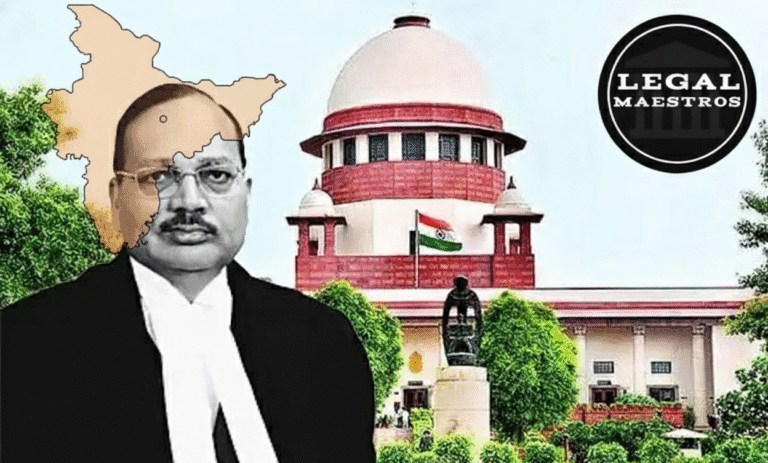
Supreme Court of India in a very recent judgment in the case of M/s Torino Laboratories Pvt. Ltd. vs. Union of India & Ors. answered a really important question under the Employees Provident Funds and Miscellaneous Provisions Act, 1952 (herein referred to as the EPF Act). The question of interest was whether two different legal entities could be considered as an entity whilst applying provident funds. The case brings out the attitude of the judiciary in thwarting the circumvention of Social welfare laws that were beneficial.
The History of the Conflict
The appeal was a case of a decision granted by the High Court of Madhya Pradesh that confirmed an order of the Employees Provident Fund Appellate Tribunal. In its turn, this Tribunal had upheld a decision of the Assistant Provident Fund Commissioner (APFC) in Indore. The APFC had taken decision and stated that going forward, M/s Torino Laboratories Pvt. Ltd.(appellant) and M/s Vindas Chemical Industries Private Limited (third respondent) would be treated as one under the EPF Act and accordingly made an order against the appellant that the same to pay unpaid dues of provident fund with effect from September 1995.
L/s Vindas Chemical Industries Private Limited was started in the year 1988 by Dr. Darshan Kataria with his brother who specialize in the manufacture of injections and capsules at their factory at Plot No. 65, Sector-1, Pithampur. Thereafter, the appellant company M/s Torino laboratories Pvt. Ltd. was incorporated in 1990 by Shri Vasudev Kataria and Smt. Rajni Kataria, wife of Dr. Darshan Kataria. Interestingly, Dr. Darshan Kataria also became a director in the later course in the appellant company. The appellant was running a factory which manufactured tablets and liquid syrups located in Plot No. 65/1, Sector-1, Pithampur which was close to the premises of Vindas. Vindas was also already covered under the EPF Act.
For any queries or to publish an article or post or advertisement on our platform, do call at +91 6377460764 or email us at contact@legalmaestros.com.
The provident fund authorities when they inspected them in 2005 found that they demanded that appellant provide their contributions basing on the number of employees which was above the threshold. This was subsequently followed by the exploration of the possibility of so called clubbing the unit of the appellant with the unit of Vindas. The APFC in its determination dated February 17, 2006 held that indeed the two were one in EPF terms. This determination was made through a number of shared issues: the industry of both units to be pharmaceutical; both units to be at the same premises with a shared entry and there being no visible demarcation; both units having common phone numbers; both guarded by the same security officers, one common administrative office, the same website or e-mails IDs and the same directors holding the same Hindu undivided family and the same source of finance. The APFC determined that it existed “Unity of Purpose and Functional Integrality”.
The appeal by the appellant to the Appellate Tribunal was turned down and so was a writ petition before the High Court and thus arrived at the Supreme Court.
The Core Legal issue: What is a One Establishment?
The main issue of concern raised before the Supreme Court was whether authorities of EPF had any basis to consider the appellant and Vindas as one entity under the EPF Act. According to the appellant, Section 2A of the EPF Act and its provision that any establishment encompasses all its departments and branches could not come to two separate legal entities. They pointed out to their individual registrations under different acts (Drugs and Cosmetic Act, Factories Act), taxes registration, and utility connection. They also pointed at the various products that each company produced and the lack of interchange of the employees who had raised a Labour Court award to be allowed to work at Vindas that was dismissed by the Labour Court citing that the employees had no right to work at Vindas.
For any queries or to publish an article or post or advertisement on our platform, do call at +91 6377460764 or email us at contact@legalmaestros.com.
The EPF Authorities responded that establishment is an issue of mixed fact and law, and a question that ought to be identified by reflecting on the objective of the statute. They claimed that the similarities that the APFC had discovered, that included shared premises, common management, finance and administration functions, were clear signs of functional integrality and as such, the units should be clubbed. Their reasoning was that the struggle to prove separate existence was that of the appellant and such a decision by the Labour Court on the unity of employment was not binding to the EPF authorities.
EPF Act and Tests of Unity Interpretation of the Act of Unity
The supreme court once again reinstated that the EPF Act is a positive social welfare act, devised to offer provident funds, pension funds and the insurance to employees. Thus it has to be read in a broad sense in order to get its purpose and to avoid the avoidance of its requirement.
Although Section 2A of the EPF Act makes it clear that an establishment covers its departments and its branches, the Court indicated that under Section 2A, there are no tests which give indicators as to when it is possible that two legally distinct entities may qualify as a single establishment and the Court always takes care to gauge whether the separate application of two such entities is a sham device to evade operation of the law.
For any queries or to publish an article or post or advertisement on our platform, do call at +91 6377460764 or email us at contact@legalmaestros.com.
The Court had to attempt to answer this question by referring to a long chain of its previous precedents that have created different so-called tests of unity of an establishment that is industrial. There is no set of rules which should be literally applied to the tests, since, it is said, there is perhaps no test you can construct which can absolutely and always be applied to all cases. The real point behind these tests is the awareness of the actual relation of the various units, branches or departments. When they are described as a single establishment, then they become one integrated whole but otherwise they are not.
Matters put into consideration are:
- Geographical distance: The closeness of the units.
- Unified ownership management and control: Shared management and control, shared ownership as well as central fourteen-hour command.
- Employment and conditions of service: Unified work force, mobility of workers and so on.
- Functionality: Integrality and whether any one of them is fundamental to the existence of the other, or whether they are both dependent on each other. The Court particularly made it clear that functional integrality is a vital test although not the only test that is determinant especially when managing businesses of same nature which are operated in various localities.
- Overall purpose or design togetherness: Does the two entities share a shared objective or are they engaged in similar activities?
- Financial unity: Common capital, financial profit pool and the same source of finances.
- Employer behavior: How the employer himself/herself tends to treat the units in terms of capital, staff and management.
The Court stressed that a number of tests could be operative in a case at the same time and that the relevance of the test would depend on the particular facts of the case, the character of the enterprise and the purpose of the statute involved.
For any queries or to publish an article or post or advertisement on our platform, do call at +91 6377460764 or email us at contact@legalmaestros.com.
The decision of the Court
In the instant case, the Supreme Court has affirmed the decision of the APFC, the Appellate Tribunal as well as the High Court. The Court held that there are a large number of commonalities, which include the fact that there are common underpinning premises occupied, common administration and registered office, same contact details (telephone, fax, email, web), having common security, management being unified over the same group of directors as being of the same family and common source of finance, these commonalities have the effect of creating a kind of unity of purpose and functional integrality.
The Court ruled that these legal registrations separately or the production of various products was not a factor to eliminate the unity since the industrial activity was the same, which was pharmaceutical. It again stated that functional integrality is not the only determining factor and it is the whole picture that constitutes a combination of various factors that are important. The Court also rejected the relevance of the awards by the Labour Court on the basis that it addressed another matter and did not address the wider variety of factors which are pertinent to EPF clubbing.
Finally, the appeal was rejected by the Supreme Court confirming that M/s Torino Laboratories Pvt. Ltd. and M/s Vindas Chemical Industries Private Limited were really a single establishment under the EPF Act. This ruling agrees with the premise that although legal distinctions are present, the courts will look past those apparent partitions to make certain that the protective nature of social welfare law is not maimed by artificially applied arrangements. Sources
For any queries or to publish an article or post or advertisement on our platform, do call at +91 6377460764 or email us at contact@legalmaestros.com.




![Research Assistantship @ Sahibnoor Singh Sindhu, [Remote; Stipend of Rs. 7.5k; Dec 2025 & Jan 2026]: Apply by Nov 14, 2025!](https://legalmaestros.com/wp-content/uploads/2025/11/Gemini_Generated_Image_s0k4u6s0k4u6s0k4-768x707.png)
![Karanjawala & Co Hiring Freshers for Legal Counsel [Immediate Joining; Full Time Position in Delhi]: Apply Now!](https://legalmaestros.com/wp-content/uploads/2025/11/Gemini_Generated_Image_52f8mg52f8mg52f8-768x711.png)
![Part-Time Legal Associate / Legal Intern @ Juris at Work [Remote]: Apply Now!](https://legalmaestros.com/wp-content/uploads/2025/11/ChatGPT-Image-Nov-12-2025-08_08_41-PM-768x768.png)
![JOB POST: Legal Content Manager at Lawctopus [3-7 Years PQE; Salary Upto Rs. 70k; Remote]: Rolling Applications!](https://legalmaestros.com/wp-content/uploads/2025/11/ChatGPT-Image-Nov-12-2025-08_01_56-PM-768x768.png)